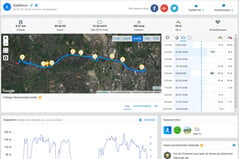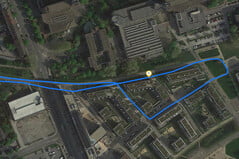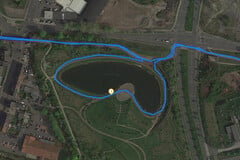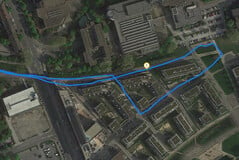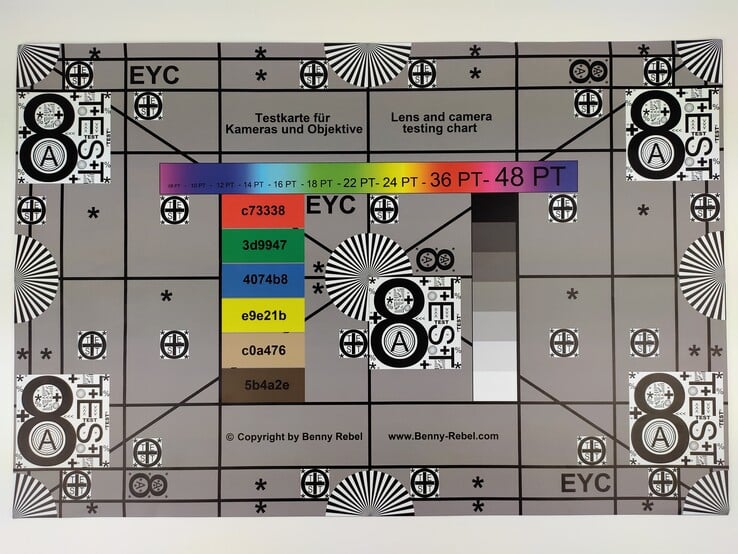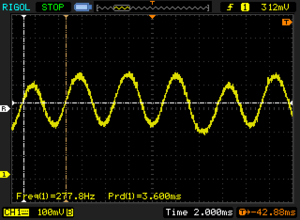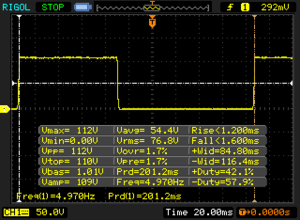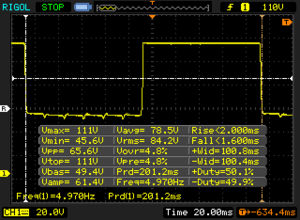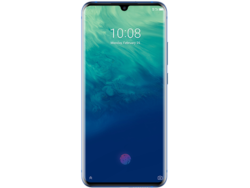Breve Análise do Smartphone ZTE Axon 10 Pro: O assassino de carros-chefes da China
Os Top 10
» Os Top 10 Portáteis Multimídia
» Os Top 10 Portáteis de Jogos
» Os Top 10 Portáteis Leves para Jogos
» Os Top 10 Portáteis Acessíveis de Escritório/Empresariais
» Os Top 10 Portáteis Premium de Escritório/Empresariais
» Os Top 10 dos Portáteis Workstation
» Os Top 10 Subportáteis
» Os Top 10 Ultrabooks
» Os Top 10 Conversíveis
» Os Top 10 Tablets
» Os Top 10 Smartphones
» A melhores Telas de Portáteis Analisadas Pela Notebookcheck
» Top 10 dos portáteis abaixo dos 500 Euros da Notebookcheck
» Top 10 dos Portáteis abaixo dos 300 Euros
| Networking | |
| iperf3 transmit AX12 | |
| ZTE Axon 9 Pro | |
| Xiaomi Mi 9 | |
| ZTE Axon 10 Pro | |
| Nokia 9 PureView | |
| Samsung Galaxy S10e | |
| OnePlus 7 | |
| iperf3 receive AX12 | |
| Xiaomi Mi 9 | |
| ZTE Axon 9 Pro | |
| Nokia 9 PureView | |
| ZTE Axon 10 Pro | |
| Samsung Galaxy S10e | |
| OnePlus 7 | |
| |||||||||||||||||||||||||
iluminação: 92 %
iluminação com acumulador: 402 cd/m²
Contraste: ∞:1 (Preto: 0 cd/m²)
ΔE Color 4.1 | 0.5-29.43 Ø4.87
ΔE Greyscale 3.7 | 0.5-98 Ø5.1
99.6% sRGB (Calman 2D)
Gamma: 2.23
| ZTE Axon 10 Pro AMOLED, 2340x1080, 6.5" | ZTE Axon 9 Pro AMOLED, 2248x1080, 6.2" | OnePlus 7 AMOLED, 2340x1080, 6.4" | Nokia 9 PureView P-OLED, 2880x1440, 6" | Xiaomi Mi 9 AMOLED, 2340x1080, 6.4" | Samsung Galaxy S10e AMOLED, 2280x1080, 5.8" | |
|---|---|---|---|---|---|---|
| Screen | 23% | 21% | 38% | 51% | 28% | |
| Brightness middle | 402 | 521 30% | 603 50% | 648 61% | 593 48% | 426 6% |
| Brightness | 399 | 517 30% | 605 52% | 641 61% | 587 47% | 427 7% |
| Brightness Distribution | 92 | 96 4% | 94 2% | 92 0% | 94 2% | 96 4% |
| Black Level * | ||||||
| Colorchecker dE 2000 * | 4.1 | 2.9 29% | 3.5 15% | 2.3 44% | 0.9 78% | 2.14 48% |
| Colorchecker dE 2000 max. * | 6.5 | 5.5 15% | 7.7 -18% | 5.2 20% | 2 69% | 3.29 49% |
| Greyscale dE 2000 * | 3.7 | 2.7 27% | 2.7 27% | 2.2 41% | 1.5 59% | 1.8 51% |
| Gamma | 2.23 99% | 2.01 109% | 2.266 97% | 2.3 96% | 2.27 97% | 2.111 104% |
| CCT | 7841 83% | 6288 103% | 6775 96% | 6592 99% | 6548 99% | 6329 103% |
* ... menor é melhor
Cintilação da tela / PWM (modulação por largura de pulso)
| Tela tremeluzindo/PWM detectado | 277.8 Hz | ≤ 99 % configuração de brilho | |
A luz de fundo da tela pisca em 277.8 Hz (pior caso, por exemplo, utilizando PWM) Cintilação detectada em uma configuração de brilho de 99 % e abaixo. Não deve haver cintilação ou PWM acima desta configuração de brilho. A frequência de 277.8 Hz é relativamente alta, portanto, a maioria dos usuários sensíveis ao PWM não deve notar nenhuma oscilação. No entanto, há relatos de que alguns usuários ainda são sensíveis ao PWM em 500 Hz e acima, portanto, esteja atento. [pwm_comparison] Em comparação: 53 % de todos os dispositivos testados não usam PWM para escurecer a tela. Se PWM foi detectado, uma média de 8516 (mínimo: 5 - máximo: 343500) Hz foi medida. | |||
Exibir tempos de resposta
| ↔ Tempo de resposta preto para branco | ||
|---|---|---|
| 2.8 ms ... ascensão ↗ e queda ↘ combinadas | ↗ 1.2 ms ascensão | |
| ↘ 1.6 ms queda | ||
| A tela mostra taxas de resposta muito rápidas em nossos testes e deve ser muito adequada para jogos em ritmo acelerado. Em comparação, todos os dispositivos testados variam de 0.1 (mínimo) a 240 (máximo) ms. » 11 % de todos os dispositivos são melhores. Isso significa que o tempo de resposta medido é melhor que a média de todos os dispositivos testados (20.8 ms). | ||
| ↔ Tempo de resposta 50% cinza a 80% cinza | ||
| 3.6 ms ... ascensão ↗ e queda ↘ combinadas | ↗ 2 ms ascensão | |
| ↘ 1.6 ms queda | ||
| A tela mostra taxas de resposta muito rápidas em nossos testes e deve ser muito adequada para jogos em ritmo acelerado. Em comparação, todos os dispositivos testados variam de 0.165 (mínimo) a 636 (máximo) ms. » 11 % de todos os dispositivos são melhores. Isso significa que o tempo de resposta medido é melhor que a média de todos os dispositivos testados (32.5 ms). | ||
| AnTuTu v7 - Total Score (classificar por valor) | |
| ZTE Axon 10 Pro | |
| ZTE Axon 9 Pro | |
| OnePlus 7 | |
| Nokia 9 PureView | |
| Xiaomi Mi 9 | |
| Samsung Galaxy S10e | |
| Média Qualcomm Snapdragon 855 (217967 - 398720, n=16) | |
| Jetstream 2 - 2.0 Total Score | |
| Média da turma Smartphone (13.8 - 387, n=171, últimos 2 anos) | |
| OnePlus 7 (Chrome 74) | |
| Média Qualcomm Snapdragon 855 (45.5 - 67, n=16) | |
| Xiaomi Mi 9 (Chrome 73) | |
| ZTE Axon 10 Pro (Chrome 74) | |
| Nokia 9 PureView (Chrome 73.0.3683.90) | |
| Speedometer 2.0 - Result | |
| Média da turma Smartphone (15.2 - 569, n=151, últimos 2 anos) | |
| OnePlus 7 (Chome 74) | |
| ZTE Axon 10 Pro (Chrome 74) | |
| Xiaomi Mi 9 (Chrome 73.0.3683.75) | |
| Média Qualcomm Snapdragon 855 (42.5 - 67.9, n=15) | |
| Nokia 9 PureView (Chrome 73.0.3683.90) | |
| WebXPRT 3 - Overall | |
| Média da turma Smartphone (38 - 347, n=77, últimos 2 anos) | |
| OnePlus 7 (Chrome 74) | |
| Xiaomi Mi 9 (Chrome 73.0.3683.75) | |
| Média Qualcomm Snapdragon 855 (90 - 129, n=20) | |
| ZTE Axon 10 Pro (Chrome 74) | |
| Nokia 9 PureView (Chrome 73.0.3683.90) | |
| Octane V2 - Total Score | |
| Média da turma Smartphone (2228 - 100368, n=210, últimos 2 anos) | |
| ZTE Axon 10 Pro (Chrome 74) | |
| OnePlus 7 (Chrome 74) | |
| Xiaomi Mi 9 (Chrome 73.0.3683.75) | |
| Média Qualcomm Snapdragon 855 (17011 - 33918, n=21) | |
| Samsung Galaxy S10e (Chrome 73) | |
| Nokia 9 PureView (Chrome 73.0.3683.90) | |
| ZTE Axon 9 Pro (Chrome 71) | |
| Mozilla Kraken 1.1 - Total | |
| Nokia 9 PureView (Chrome 73.0.3683.90) | |
| ZTE Axon 9 Pro (Chrome 71) | |
| Samsung Galaxy S10e (Chrome 73) | |
| Média Qualcomm Snapdragon 855 (1852 - 2611, n=19) | |
| OnePlus 7 (Chrome 74) | |
| Xiaomi Mi 9 (Chrome 73.0.3683.75) | |
| ZTE Axon 10 Pro (Chrome 74) | |
| Média da turma Smartphone (277 - 28190, n=171, últimos 2 anos) | |
* ... menor é melhor
| ZTE Axon 10 Pro | ZTE Axon 9 Pro | OnePlus 7 | Nokia 9 PureView | Xiaomi Mi 9 | Samsung Galaxy S10e | Média 128 GB UFS 2.1 Flash | Média da turma Smartphone | |
|---|---|---|---|---|---|---|---|---|
| AndroBench 3-5 | -29% | 0% | -42% | -13% | -30% | -16% | 138% | |
| Sequential Read 256KB | 769 | 719 -7% | 1463 90% | 728 -5% | 666 -13% | 792 3% | 760 ? -1% | 2030 ? 164% |
| Sequential Write 256KB | 503 | 196.4 -61% | 392 -22% | 200.3 -60% | 388.3 -23% | 194.1 -61% | 297 ? -41% | 1646 ? 227% |
| Random Read 4KB | 150.4 | 141.3 -6% | 175.3 17% | 132 -12% | 149.4 -1% | 136.9 -9% | 152.9 ? 2% | 282 ? 88% |
| Random Write 4KB | 189.5 | 22.52 -88% | 28.7 -85% | 20.18 -89% | 165.3 -13% | 24.1 -87% | 131.6 ? -31% | 325 ? 72% |
| Sequential Read 256KB SDCard | 88.2 ? | 85.4 ? -3% | 73.2 ? -17% | 76 ? -14% | ||||
| Sequential Write 256KB SDCard | 66.8 ? | 61.6 ? -8% | 60.7 ? -9% | 59.6 ? -11% |
Arena of Valor
Shadow Fight 3
(±) A temperatura máxima no lado superior é 41.4 °C / 107 F, em comparação com a média de 35.1 °C / 95 F , variando de 21.9 a 63.7 °C para a classe Smartphone.
(±) A parte inferior aquece até um máximo de 40.9 °C / 106 F, em comparação com a média de 33.9 °C / 93 F
(+) Em uso inativo, a temperatura média para o lado superior é 27.5 °C / 82 F, em comparação com a média do dispositivo de 32.8 °C / ### class_avg_f### F.
ZTE Axon 10 Pro análise de áudio
(+) | os alto-falantes podem tocar relativamente alto (###valor### dB)
Graves 100 - 315Hz
(-) | quase nenhum baixo - em média 22.4% menor que a mediana
(±) | a linearidade dos graves é média (12.1% delta para a frequência anterior)
Médios 400 - 2.000 Hz
(+) | médios equilibrados - apenas 4.4% longe da mediana
(+) | médios são lineares (5.3% delta para frequência anterior)
Altos 2 - 16 kHz
(+) | agudos equilibrados - apenas 3.1% longe da mediana
(+) | os máximos são lineares (5.4% delta da frequência anterior)
Geral 100 - 16.000 Hz
(±) | a linearidade do som geral é média (17.8% diferença em relação à mediana)
Comparado com a mesma classe
» 12% de todos os dispositivos testados nesta classe foram melhores, 8% semelhantes, 80% piores
» O melhor teve um delta de 12%, a média foi 36%, o pior foi 134%
Comparado com todos os dispositivos testados
» 33% de todos os dispositivos testados foram melhores, 8% semelhantes, 59% piores
» O melhor teve um delta de 4%, a média foi 24%, o pior foi 134%
Xiaomi Mi 9 análise de áudio
(+) | os alto-falantes podem tocar relativamente alto (###valor### dB)
Graves 100 - 315Hz
(-) | quase nenhum baixo - em média 25.1% menor que a mediana
(±) | a linearidade dos graves é média (10.7% delta para a frequência anterior)
Médios 400 - 2.000 Hz
(+) | médios equilibrados - apenas 4.4% longe da mediana
(+) | médios são lineares (5% delta para frequência anterior)
Altos 2 - 16 kHz
(+) | agudos equilibrados - apenas 3.4% longe da mediana
(+) | os máximos são lineares (4% delta da frequência anterior)
Geral 100 - 16.000 Hz
(±) | a linearidade do som geral é média (17.3% diferença em relação à mediana)
Comparado com a mesma classe
» 10% de todos os dispositivos testados nesta classe foram melhores, 7% semelhantes, 83% piores
» O melhor teve um delta de 12%, a média foi 36%, o pior foi 134%
Comparado com todos os dispositivos testados
» 30% de todos os dispositivos testados foram melhores, 8% semelhantes, 62% piores
» O melhor teve um delta de 4%, a média foi 24%, o pior foi 134%
| desligado | |
| Ocioso | |
| Carga |
|
Key:
min: | |
| ZTE Axon 10 Pro 4000 mAh | ZTE Axon 9 Pro 4000 mAh | OnePlus 7 3700 mAh | Nokia 9 PureView 3320 mAh | Xiaomi Mi 9 3300 mAh | Samsung Galaxy S10e 3100 mAh | Média Qualcomm Snapdragon 855 | Média da turma Smartphone | |
|---|---|---|---|---|---|---|---|---|
| Power Consumption | -17% | -10% | -68% | -5% | -16% | -29% | -38% | |
| Idle Minimum * | 0.76 | 0.86 -13% | 0.6 21% | 1.65 -117% | 0.67 12% | 0.6 21% | 0.939 ? -24% | 0.872 ? -15% |
| Idle Average * | 1.15 | 1.1 4% | 1.1 4% | 2.34 -103% | 1.26 -10% | 1.2 -4% | 1.506 ? -31% | 1.438 ? -25% |
| Idle Maximum * | 1.18 | 1.21 -3% | 2 -69% | 2.43 -106% | 1.29 -9% | 1.5 -27% | 1.799 ? -52% | 1.582 ? -34% |
| Load Average * | 3.95 | 5.02 -27% | 4 -1% | 5.02 -27% | 3.71 6% | 5.2 -32% | 4.61 ? -17% | 6.99 ? -77% |
| Load Maximum * | 7.49 | 10.82 -44% | 8 -7% | 6.51 13% | 9.3 -24% | 10.2 -36% | 9.04 ? -21% | 10.4 ? -39% |
* ... menor é melhor
| ZTE Axon 10 Pro 4000 mAh | ZTE Axon 9 Pro 4000 mAh | OnePlus 7 3700 mAh | Nokia 9 PureView 3320 mAh | Xiaomi Mi 9 3300 mAh | Samsung Galaxy S10e 3100 mAh | |
|---|---|---|---|---|---|---|
| Duração da bateria | -3% | 13% | -26% | -13% | -32% | |
| Reader / Idle | 1927 | 1989 3% | 1250 -35% | 1650 -14% | 1185 -39% | |
| H.264 | 1068 | 933 -13% | 732 -31% | 1008 -6% | 795 -26% | |
| WiFi v1.3 | 680 | 661 -3% | 901 33% | 486 -29% | 546 -20% | 416 -39% |
| Load | 217 | 278 28% | 202 -7% | 194 -11% | 164 -24% |
Pro
Contra
O ZTE Axon 10 Pro pode competir com carros-chefe mais caros em muitos níveis. Tem excelente desempenho do sistema graças ao seu SoC Qualcomm Snapdragon 855 e 6 GB de RAM. Muitos OEMs também omitem a expansão do cartão microSD a esse preço, o que dá ao Axon 10 Pro uma vantagem, pois ele pode ler cartões de até 2 TB. O dispositivo também possui câmeras de boa qualidade, especialmente para tirar fotos em macro. No entanto, a ZTE não ajuda o Axon 10 Pro ao projetá-lo, parece quase indistinguível do Huawei P30 Pro.
O ZTE Axon 10 Pro é uma alternativa poderosa para outros carros-chefe mais caros. No entanto, não faz o suficiente para se diferenciar da concorrência, em nossa opinião. Pior ainda, parece um imitador.
O dispositivo também sofre de algumas deficiências irritantes. Embora gostemos do seu painel AMOLED por sua boa taxa de contraste e valor de preto, ele é comparativamente escuro pelos padrões de smartphone carros-chefe. Além disso, nossa unidade de análise esquenta muito para o nosso gosto sob uso intenso contínuo e pode se sentir desconfortável para algumas pessoas quando jogam.
No geral, o Axon 10 Pro é uma opção bem equipada e potente para séries emblemáticas mais estabelecidas. A ZTE incluiu NFC, carregamento sem fio e Wi-Fi rápido, todos os quais são bem-vindos. A empresa até desenvolveu uma variante 5G, embora o modelo 4G continue sendo o melhor valor, considerando o lançamento limitado de 5G no momento deste artigo.
ZTE Axon 10 Pro
- 08/31/2022 v7 (old)
Mike Wobker











